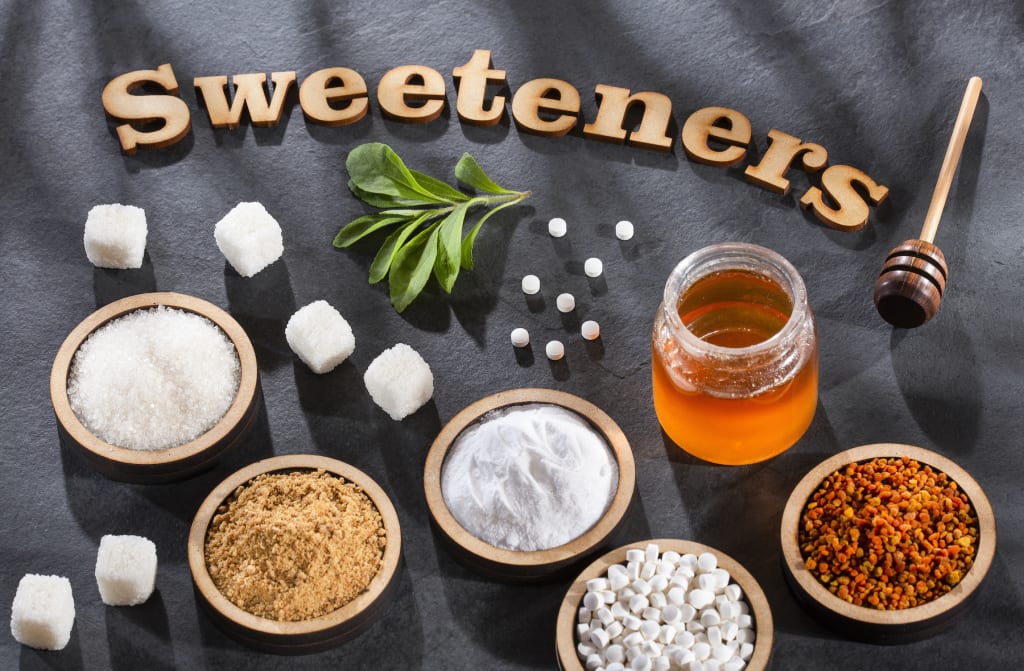Content warning
This story may contain sensitive material or discuss topics that some readers may find distressing. Reader discretion is advised. The views and opinions expressed in this story are those of the author and do not necessarily reflect the official policy or position of Vocal.
U.S. Artificial Sweeteners Market: A Look at Popular Sugar Substitutes in the United States
U.S. Artificial Sweeteners Market

History of U.S. Artificial Sweeteners Market
Artificial sweeteners were first introduced in the late 19th century as sugar alternatives for diabetics and others needing to restrict their sugar intake. Some of the earliest and most well-known sweeteners included saccharin and cyclamate, both discovered in 1878. In the following decades, aspartame and acesulfame potassium were developed and approved for use. More recently, sucralose was approved by the FDA in 1998 after being discovered in 1976.
Saccharin
One of the oldest and best-known Artificial Sweeteners is saccharin. It is about 300-400 times sweeter than sugar but has a bitter or metallic aftertaste. Saccharin was widely used for decades and was even found in some brands of chewing gum and breath mints. However, it fell out of favor after studies linked it to cancer in rats. It was banned for use in food for a period but is now allowed once again in small amounts. Saccharin is sold under brand names like Sweet 'N Low.
Aspartame
Aspartame is roughly 200 times sweeter than sugar but with few calories. It broke onto the scene in the 1980s after being approved for use. Some of its brand names include NutraSweet and Equal. Aspartame is commonly found in foods like diet sodas, gum, sugar-free desserts, and tabletop sweeteners. However, aspartame is one of the most controversial sweeteners due to some studies linking it to health issues like headaches in sensitive individuals. It remains widely used but many seek out alternatives.
Sucralose
Discovered in 1976 and approved in 1998, sucralose is a non-caloric sweetener that is about 600 times sweeter than sugar. Unlike other sweeteners, it is highly stable under heat so it can be used in baking and cooking. Top brand names for sucralose are Splenda and Sugar Twin. It has gained popularity as a sugar substitute, especially for baked goods, hot beverages, and recipes. Sucralose is considered one of the safest sweeteners by many health experts.
Acesulfame Potassium
Marketed under the brand name Sunett and Sweet One, acesulfame potassium is about 200 times sweeter than sugar. However, it lacks the pleasing taste that other sweeteners provide on its own. For this reason, it is often blended with other sweeteners like aspartame or sucralose. Acesulfame potassium provides good stability, making it suitable for products where heat is involved. Despite limited long-term studies on its safety, it is generally recognized as safe by most health authorities.
Latest Trends in Sugar Substitution
Many consumers today seek out natural alternatives to both sugar and artificial sweeteners. Stevia, an herbal sweetener, has grown in popularity due to being derived from a plant source. Other trends involve consuming sweeteners like honey, maple syrup, coconut sugar, and fruit juice concentrates which are less processed than refined sugar or artificial sweeteners. Additionally, some turn to low-calorie sweeteners like allulose and monk fruit extract that have minimal impact on blood sugar and calories. Brands are also introducing blends that combine natural with artificial sweeteners for an enhanced sweet taste. Meanwhile, researchers continue developing new sugar substitutes that can satisfy a sweet craving without health or environmental tradeoffs.
Regulation of U.S. Artificial Sweeteners Market
All artificial sweeteners used in food must be approved by the FDA before entering the market. This usually involves extensive safety testing through animal and human studies. In general, the FDA considers artificial sweeteners as food additives that are recognized as safe (GRAS). However, they must still be used responsibly in moderation as part of an overall healthy diet and lifestyle. The European Food Safety Authority and other regulatory bodies also provide oversight on approving and monitoring artificial sweetener usage. With ongoing research into both risks and potential benefits, regulation and recommendations may evolve over time.
Sweetener Preferences by Brands and Consumers
Major food and beverage brands utilize the full spectrum of sugar substitutes depending on factors like product category, formulation needs, and target market. Companies want satisfying sweeteners that are low or no-calorie to meet consumer demand for healthier options. At the same time, natural alternatives gain traction depending on perceived safety. Meanwhile, individual preferences vary greatly depending on taste, health priorities, dietary restrictions, and beliefs about artificial ingredients.
In Summary, overall usage also fluctuates with changing attitudes and information. Both product developers and consumers must thoughtfully consider sweetener benefits versus downsides.
Get more insights on this topic: https://manage.wix.com/dashboard/c4ce5910-f290-4bad-9e93-c07ea06fa726/blog/2ca625d1-8b10-42ac-9e26-c1f759c9f260/edit?tab=published&lang=en
About the Creator
Enjoyed the story? Support the Creator.
Subscribe for free to receive all their stories in your feed. You could also pledge your support or give them a one-off tip, letting them know you appreciate their work.





Comments
There are no comments for this story
Be the first to respond and start the conversation.